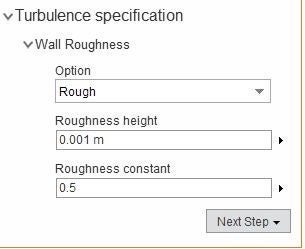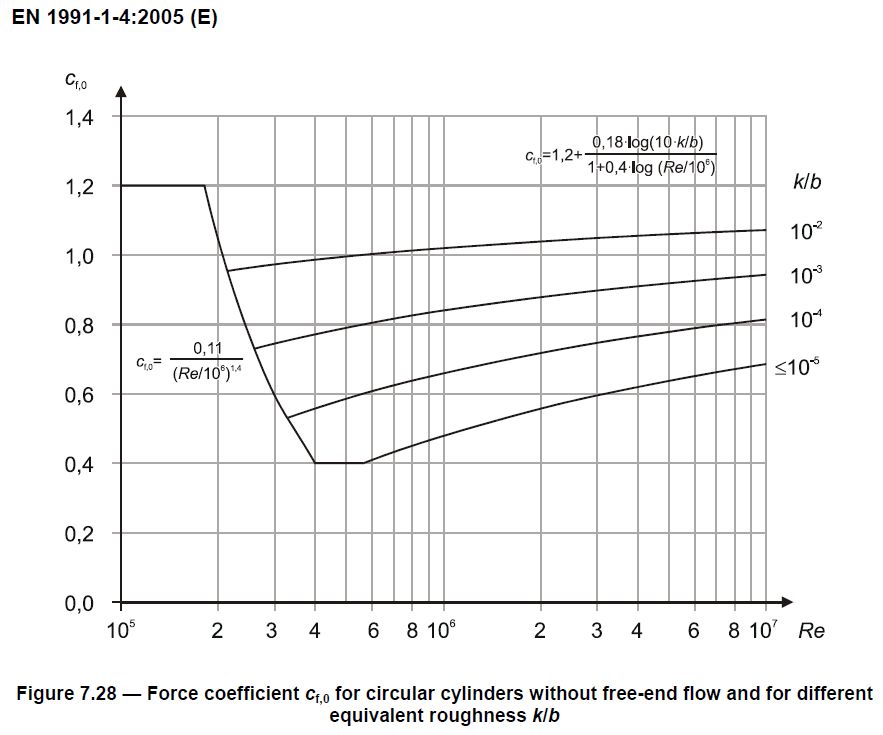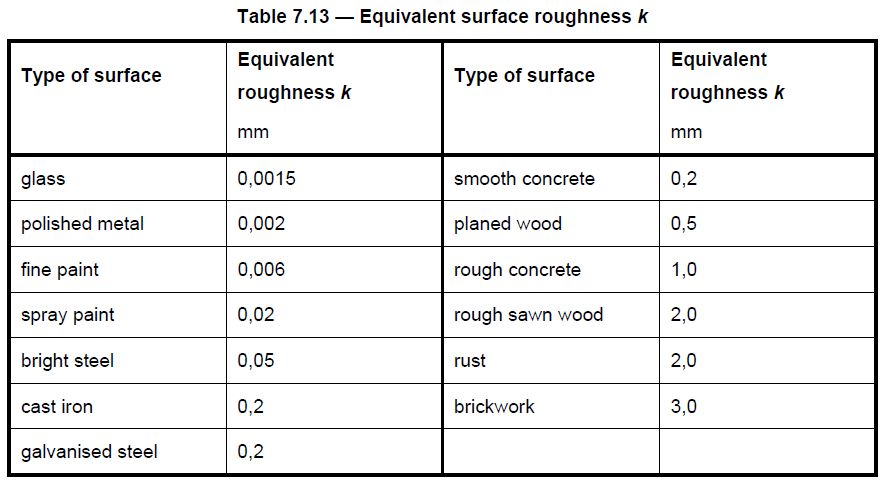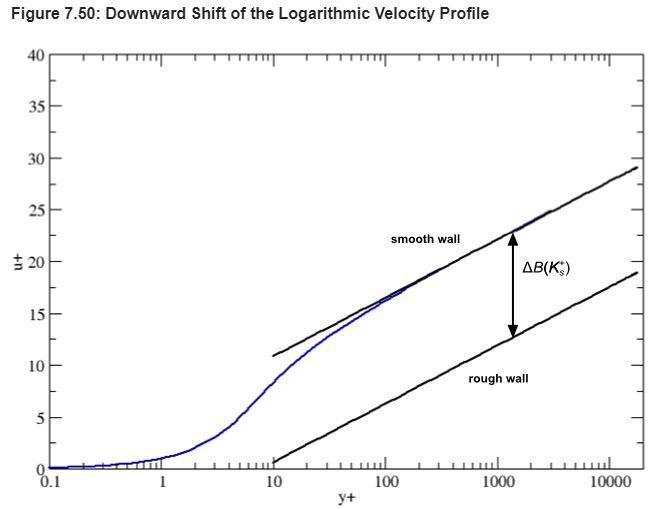TAGGED: Discovery AIM, fluids
-
-
July 5, 2019 at 1:13 pm
-
July 6, 2019 at 11:52 am
Gaurav Sharma
Ansys EmployeeHi steelxpert
I am discussing this problem with the team and will get back to you soon.
Thanks for your patience.
Regards,
Gaurav
-
July 8, 2019 at 1:57 pm
Gaurav Sharma
Ansys EmployeeHi steelxpert
In Discovery AIM, the formulas proposed by Cebeci and Bradshaw based on Nikuradse’s data are adopted to compute the wall roughness effect. (ref: T. Cebeci and P. Bradshaw. Momentum Transfer in Boundary Layers. Hemisphere Publishing Corporation, New York. 1977.)
The inputs required here are Roughness Height and Roughness Constant that helps in computing the roughness function which ultimately quantifies the downward shift (deltaB in image attached below) of logarithmic mean velocity distribution near the rough walls.
Roughness Height: The default roughness height is zero, which corresponds to smooth walls. For the roughness to take effect, a non zero value must be specified. For a uniform sand-grain roughness, the height of the sand-grain can simply be taken as roughness height . For a non-uniform sand-grain, however, the mean diameter would be a more meaningful roughness height. In case the distribution data is not available but Ra (surface Roughness) value is known, Roughness height is calculated as:
Roughness Height = 2*Ra.
Roughness constant: Choosing a proper roughness constant is again dependent on the type of distribution and has experimental evidence. The default roughness constant (0.5) was determined so that, it reproduces Nikuradse’s resistance data for pipes roughened with tightly-packed, uniform sand-grain roughness. One needs to adjust the roughness constant when the roughness to be modeled departs much from uniform sand-grain.For instance, there is some experimental evidence that, for non-uniform sand-grains, ribs, and wire-mesh roughness, a higher value (0.5-1) is more appropriate. Unfortunately, a clear guideline for choosing this constant for arbitrary types of roughness is not available.It is an empirical constant that can only be computed experimentally and there is no equation for calculating this value.
To summarize, roughness height is calculated based on the grain size distribution of the wall and as long as the distribution is uniform, a roughness constant of 0.5 is experimentally observed to be a good input value. Any deviation of grain structure to non uniform, would require to use roughness constant = 0.5-1 but there are no guidelines/formula available for choosing the most appropriate value and it remains an empirical constant.
With the calculation approach of Discovery AIM known, I hope I was able to answer your question.
Thanks & Regards,
Gaurav
-
July 8, 2019 at 6:25 pm
info
SubscriberThank you Gaurav_ANSYS
Could you suggest a reliable source for ‘roughness constant’ database of civil engineering materials, e.g. steel plate, trapezoidal sheet, concrete etc.?
Regards,
Csaba
-
July 9, 2019 at 7:20 am
Gaurav Sharma
Ansys Employeesteelxpert
I am afraid we do not have any such guidelines.
I would again like to mention that roughness constant has more to do with even/uneven surfaces. Irrespective of the material (say steel or concrete), if the grain size of wall is more even, i.e. if the grains are of similar size without much deviation, a value of 0.5 should be used. If the grain sizes are uneven, a higher value must be used. In nutshell, roughness contact doesnt depend on size of grain or the material of wall but depends upon the uniformity of grain.
As I said, for any particular wall surface, experimentally obtaining the roughness constant might be the only way as roughness constant is a empirical value. However you can start with any approx value between 0.5-1 and keep tweaking the same unless you get desired results.
Thanks & Regards,
Gaurav
-
-
July 9, 2019 at 10:33 am
info
SubscriberHi Gaurav_ANSYS ,
Thank you for answers, now it seems clear.
Regards,
Csaba
-
- The topic ‘Wall Roughness, AIM’ is closed to new replies.


- Project lines/edges into a face with the direction normal to the face
- Script for subtracting models
- No preview in explorer with scdox file
- Multiple Instances of SpaceClaim taking multiple licenses
- Issues after installing new service pack 2024R1 (sp5)
- Spaceclaim file reference error
- Add-in Error Excel
- Problems with loading my Discovery Mesh into Fluent
- Missing SubDivWrapper.dll
- Fileformats

-
4107
-
1487
-
1318
-
1156
-
1021

© 2025 Copyright ANSYS, Inc. All rights reserved.











